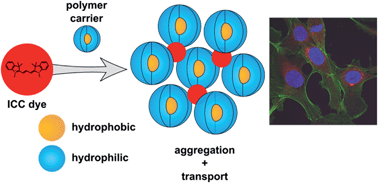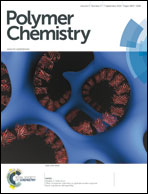Structure related transport properties and cellular uptake of hyperbranched polyglycerol sulfates with hydrophobic cores†
Abstract
A set of six hydrophobically derivatized polymers based on polyglycerol sulfates have been investigated to determine the influence of scaffold architecture on the encapsulation properties of hydrophobic guests. Each of three block and statistical copolymers has been synthesized with phenyl, naphthyl, and biphenyl substituents in a one-pot procedure. The copolymers have been functionalized with sulfate groups in order to introduce an electrostatically repulsive surface that can stabilize the aggregated carriers. In addition, sulfates provide a highly active targeting moiety for inflammation and cellular uptake. UV measurements show a supramolecular encapsulation of the investigated guest molecules in the low μM range. The transport studies with pyrene and an indocarbocyanine dye further indicated a core–shell-type architecture which provides a distinct amphiphilicity as required for supramolecular guest complexation. The combination of a host functionality with an active sulfate targeting moiety has been used to investigate the structure related cellular transport properties.


 Please wait while we load your content...
Please wait while we load your content...